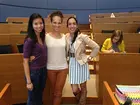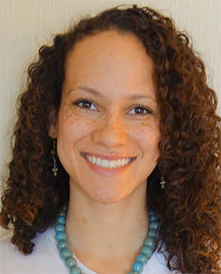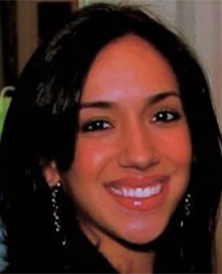
Lessons from the HR Front Lines
Yale SOM students interested in careers in human capital management learned more about working in this evolving space from a panel of their classmates on September 22. The three panelists—all of whom had either held full-time positions or interned in HR—shared their experiences and observations of the field.
One of the things that you learn very quickly in HR is how to listen.
 Communication is really big: Do people understand what’s being offered? If a rule is changing, do they understand the implications of that? And if they’re having a hard time with something, did you make yourself available to listen?
Communication is really big: Do people understand what’s being offered? If a rule is changing, do they understand the implications of that? And if they’re having a hard time with something, did you make yourself available to listen?
When we first arrived, Laszlo [Bock ’99, senior vice president of people operations for Google] said we were the cultural curators of these offices, and the precedent we set was going to influence how people function with each other and with us. When you go into HR you have this ability to change people’s lives—largely because once someone joins the workforce, there is no place else they will spend more time at than work. When you make them happy at work, you make them better parents, better sisters, better friends to everybody. They go home feeling differently. It’s an amazing opportunity.
—Brittan Berry ’16
Pre-SOM Position: Google
Being in business school, you are absolutely getting the right skillset needed, whether it’s for consulting or internal HR.
 Of course with internal HR, there’s a lot more jargon and policies and regulations that you need to know about. But those are usually things you learn on the job. If that’s what you like, I highly recommend you look into internal HR roles. But if you’re looking for a role that requires you to pull in everything you’re learning in the core, as well as soft skills and client engagement skills, human capital consulting might be a better path for you.
Of course with internal HR, there’s a lot more jargon and policies and regulations that you need to know about. But those are usually things you learn on the job. If that’s what you like, I highly recommend you look into internal HR roles. But if you’re looking for a role that requires you to pull in everything you’re learning in the core, as well as soft skills and client engagement skills, human capital consulting might be a better path for you.
—Karen Chen ’16
Internship: Deloitte Human Capital Consulting
The executive development team had an HR approach that was focused more on instinctual, anecdotal evidence, and I worked with the team to add more rigor around the process.
 So the work I did was figuring out what data they had available and using that low-hanging fruit to help the team make decisions more strategically. This meant doing two major things: One was developing a client relationships management tool where they can actually track data on their top talent. And the second thing was developing a metrics dashboard to measure the effectiveness of their leadership development program to help inform the decision they make around program content, structure, and participant selection… Increasingly, HR staffs are being pressured by their business partners to become more strategic; as opposed to using descriptive data to assess where people stand, it’s using data to describe what’s happening in the company, and assessing the correlation between certain characteristics and certain outcomes, so decisions can be made more strategically.
So the work I did was figuring out what data they had available and using that low-hanging fruit to help the team make decisions more strategically. This meant doing two major things: One was developing a client relationships management tool where they can actually track data on their top talent. And the second thing was developing a metrics dashboard to measure the effectiveness of their leadership development program to help inform the decision they make around program content, structure, and participant selection… Increasingly, HR staffs are being pressured by their business partners to become more strategic; as opposed to using descriptive data to assess where people stand, it’s using data to describe what’s happening in the company, and assessing the correlation between certain characteristics and certain outcomes, so decisions can be made more strategically.
—Sonia Miranda-Lopez ’16
Internship: Biogen
